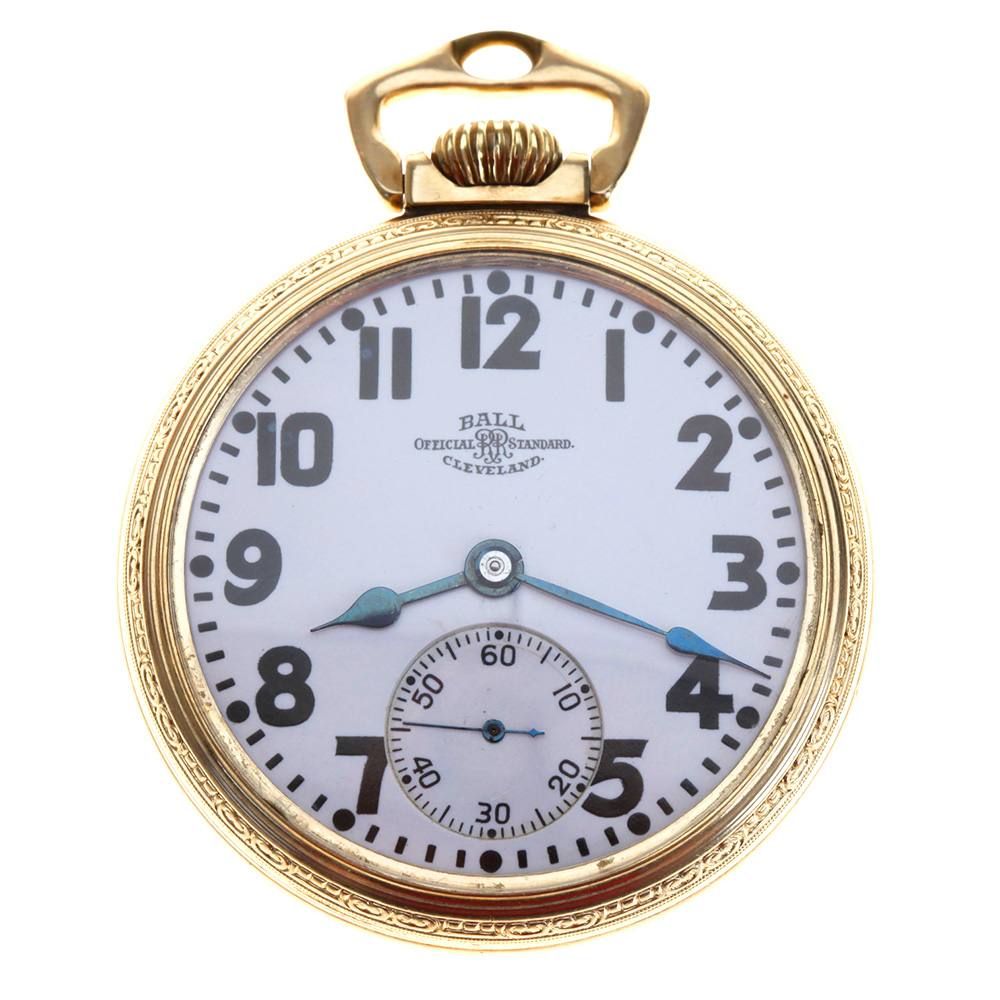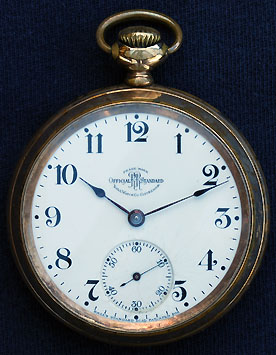

watches manufacturers nervously awaited these guidelines. Approximately in 1893 the General Board of Railways have introduced new guidelines. Prior to 1893 requirements for clocks railroad was individual for each railway. The company guarantees that the mechanism would have differences of less than six seconds in a month. Waltham» watches manufactured and added to” The engineers and conductors of the railroad: Watches Brand “President” is a high-quality nickel, 18 gauge plate, with a crown and a lever to adjust the time, adapted to different temperature, isotope and accuracy in any position. In February 1894 «United States Watch Co. Regulations 1892 provided for the type of watches from 17 stones and a double roller. The provision reads “… watches Waltham, specially designed for use by the railroad …”. In the spring of 1894 and in recent years were first taken of the company, American Waltham Watch Co “A systematic examination of clocks of the railroad.

In 1887 the American railroad companies had a meeting to determine the requirements for standard time and inspection timepieces. Mechanism made Elgin, was 18 caliber, with 15 stones, with a winder and a lever to set the time. has been patented and was branded “Pennsylvania Railroad Co.” on the plates and “BW Raymond” on the mechanism. At the end of the 1860th mechanism Pennsylvania Railroad Co.

Rules same railroad and watch evolve and change from year to year. Some railroads have used only part of the requirements of the above. Then America numbered from 500 to 1000 railroads and each used many different rules and specifications. What kind of watches? No easy answer to this question. “ …open faced, size 16 or 18, have no less than 17 jewels, modified to a minimum of five positions, keep time precisely to within thirty seconds per week, modified to temps of 34 ☏ (1 ☌) to 100 ☏ (38 ☌), possess a double curler, steel escape wheel, lever set, regulator, winding stem at 12 o’clock, and also have bold black Arabic numbers on the whitened dial, with black hands.”įamous American railroad pocket watches are unmatched in quality and reliability. Among the engineers watches had stopped for 4 minutes! By 1893 stringent standards for railroad watches have been adopted by just about all railroads. The greatest impetus would be a terrible train wreck around the Lake Shoreline and Michigan Southern Railway in Kipton, Ohio an April 19, 1891. It required a tragedy however, to produce common acceptance of stringent precision and sturdiness standards for that watches accustomed to regulate the daily operation of yankee railroads. In 1887 the American Railway Association defined the fundamental standard for watches. Within the 1800’s America’s commerce relied on our railroad system, and railroad safety relied on accurate timekeeping. A minimum standard of excellent quality, adopted by the company for watches, was supposed to include: a mechanism with 15 stones and a patented controller that is adapted to changes in temperature, variations in time should not exceed 30 seconds per week. Employees are now required to check their watches for a quarterly review and comparison with the standard weekly time with various local inspectors, who were appointed for this purpose. It opened June 15, 1892, the Central Railway of Illinois served as the beginning of the examination watches. Indeed, each station keeps the memories and has a connection with each family. In fact, the train brought many new things in life and hope to people across the country, delivering products and food, transporting people from one city to another, delivering mail, and ensuring the democratic process by allowing presidential candidates to meet and talk with people in every state. The huge success with 1830’s were puffing giant black locomotive, which belched steam and fire, moving up and down the countryside. Great importance in that era was the railroad. Postal Service was the main form of communication, connecting the country, because America is slowly moving to the 20th century. They were slower, yes, because to get from one place to another takes time. Of course, those days are past were not quite so simple as most of the memories. Few homes had electricity, and even radio have not yet entered into their lives. Women wore long dresses, and the main method of washing clothes was a washboard. Kodak camera has not yet been launched on the market. It was the end of the nineteenth century in America.


 0 kommentar(er)
0 kommentar(er)
